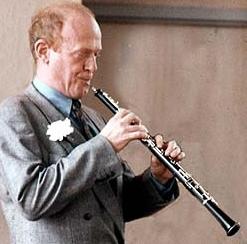Woodwind musical instruments bring a clearly audible color - strong and bright to the overall palette of the sound of the symphony orchestra.
The timbre of each of them is so independent that the composers not only supply the flute, clarinet, oboe, and bassoon with their own part, but also compose large solo episodes for them. Great attention is paid only to the bow band of the orchestra. A wind
musical instrument is the power of sounding, this is compactness, this is multi-color dynamics. Consider carefully each of them.
The flute

The oldest wind instrument, known since Egypt, Greece and Rome, but probably born many millennia earlier. Even in its most primitive form - just reed cut in a special way - the flute can sound really musical. Two varieties have been known since the Middle Ages: straight flute and transverse. The direct one - with a tip - was less amenable to improvement and therefore not used so widely; in the 18th century it was replaced by a more viable "transverse" sister from the orchestra. By virtuosity (from the convenience of the game) there are no equal flutes among brothers. A favorite instrument for home music-playing is more often than others soloing in large concert music. True, it is difficult to execute a wide cantilena on a flute - it requires a very large air flow rate. The sound is chilly, as if otherworldly. It is worth noting the most vivid examples that characterize this instrument: the tune from the opera Orpheus and Eurydice by Gluck and The Dance of the Shepherds from the ballet The Nutcracker by Tchaikovsky.
Oboe

A descendant of a primeval flute. The European version of the oboe hails from the Middle East. In the 17th century he joined the symphony orchestra, where he quickly gained concert fame and became the favorite of all music lovers. The most difficult concerts have been written for oboe since the times of Lully, Bach and Handel. Later, in the 19th century, gave way to the favorite clarinet. The oboe does not need to be tuned; the whole orchestra is equal to it. This is a “singing” wind musical instrument, although, like a flute, it can be virtuoso. But his "horse" - elegy, sadness, sadness. For example, an intermission before the second action of Swan Lake by Tchaikovsky.
Clarinet
The sound of the clarinet, which is strong, flexible and rich in expressive means, is immediately recognizable and is always heard, no matter what wind musical instruments currently compete in the struggle for the listener's attention. The pastorality of the painting is especially well conveyed with the help of this favorite of classical composers: Tchaikovsky and Rimsky-Korsakov gave to the clarinet all the tunes of the shepherd Lel. In addition to the usual, the symphony orchestra uses small, bass clarinets and occasionally the alto - basset horn.
Bassoon

Translated from Italian - a bundle of firewood. Where did such a specific name come from? In the 16th century, on the basis of an old bass pipe - bombards - a bassoon was built in the form of a huge wooden pipe bent in two. Visually, it looked like firewood in the hands of a musician. The new timbre amazed contemporaries with harmony and was even called "dolcino" - "the most delicate, sweet." In the 19th century he received his individual plan in the distribution of voices of the symphony orchestra. As an example, the opera "Robert the Devil" by Meyerbeer, where the bassoons depict deathly laughter. Beethoven, Weber, and Rimsky-Korsakov (especially in Scheherazade) use his figurative means a lot, and this wind musical instrument in the grandfather's theme (Petya and the Wolf by Prokofiev) and in the finale of Shostakovich’s ninth symphony received the most striking feature . In addition to the bassoon itself, the symphony orchestra sounds the lowest instrument in the range - the counter bassoon, almost four meters of a wooden pipe three times bent. This is knitting, so knitting! He is less technical than a simple bassoon, but the timbre resembles an organ. Usually serves to enhance the bass part. Example: "Conversation of Beauty and the Beast" Ravel - the voice of the beast.